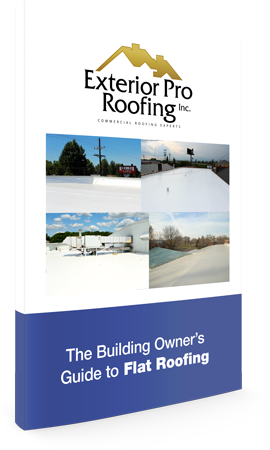Snow has blanketed most of the United States all winter so far. Businesses and homeowners are concerned about the impact this weather will have on their homes and businesses.
Winter weather extremes such as the events that many areas of the United States experience now, don’t just pose a danger to rooftops; they pose a danger to surrounding property and interior walls, ceilings, and even floors. When there are temperature changes on different parts of a roof, ice dam formation is almost inevitable. Recent television news stories showed footage of roof collapses, particularly in hard-hit New England, all of which resulted from heavy snow accumulation on rooftops.
What are Ice Dams?
Ice dams form when water from melted snow at the top of a roof, pools along the edges of the bottom of the roof’s pitch (along the eaves,) refreezes. This continues to happen all winter, and the more snow there is, the greater the potential for very serious problems. Ice dams typically form when snow covers most of a sloped roof. These large frozen mounds can inhibit draining through residential and commercial gutters.
What Causes Ice Dams?
Ice dams can only develop when three conditions are present. There must be snow – and lots of it. The second condition is a source to melt the snow. The third requirement is sub-freezing temperatures that cause the water to refreeze. When the cold temperatures refreeze the melted snow, the buildup of ice creates a dam that prevents water from draining off the roof.
This is a vicious cycle because more snow causes more snow to melt, and most of the water freezes again, creating large ice accumulations along the eaves and ice damming gutters. As the layer of snow that is closest to the roof keeps melting. The ice dam creates a blockade that stops water from going into the gutters and draining off the roof.
Ice Dams Can Cause Serious Problems

Most people have seen ice dams without realizing what they were or how they formed. One telltale sign that a building has an ice dam problem is the sight of icicles dangling from the eaves of the roof. The potential problems that ice dams can cause are very serious.
- If water can’t go anywhere because the ice dam prevents drainage, the water will just stay where it is. When the melt and freeze cycle continues, large pools of water will sit on the rooftop. They may seep under shingles, causing them to loosen.
- That water may leak through the roof, entering a building or home through the ceiling or along a wall.
- If the ceiling leaks, that means that the insulation below the rooftop is also wet. If the insulation gets wet, it no longer works. It loses its R-Value, an important indicator as to how effective the insulation is at keeping heat in the building during cold weather.
- Moist insulation creates an environment that is conducive to mildew and mold growth.
- Both icicles and ice dams may be strong enough to rip gutters off homes and commercial buildings.
- The heavier the burden a roof has to support from accumulated snow, water, and ice, the greater the likelihood that the roof will collapse.
How to Prevent Ice Dams from Forming
The Insurance Institute for Business & Home Safety offers some excellent suggestions for ice dam prevention.
- Increase the insulation between the ceiling and the roof. For suspended ceilings, use fiberglass insulation. For drywall that is nailed to wooden studs, use either fiberglass insulation, or blown insulation.
- Create a regular seasonal roof maintenance schedule. Plan to check commercial gutters, making sure that there are no gutter obstructions. Make sure downspouts are attached to gutters correctly.
- Make sure gutters are cleaned before winter.
On sloped buildings, removing snow minimizes the potential for ice dam formation. Keeping snow off a roof will eliminate the problem of ice damming gutters. On a single story building, a roof rake is useful for removing snow. On buildings where the rake won’t reach the roof while someone is standing on the ground, contact a roofing contractor.







